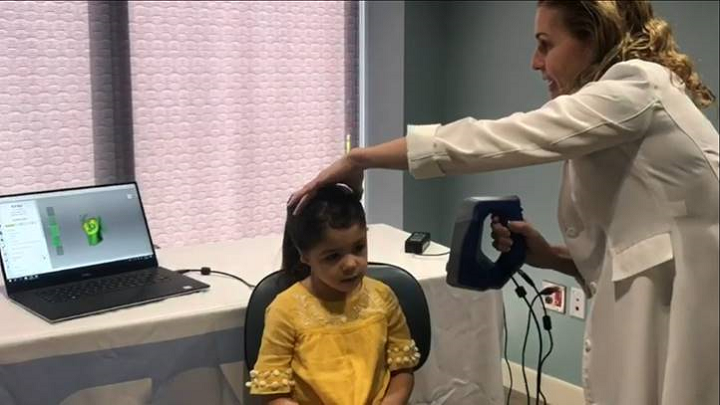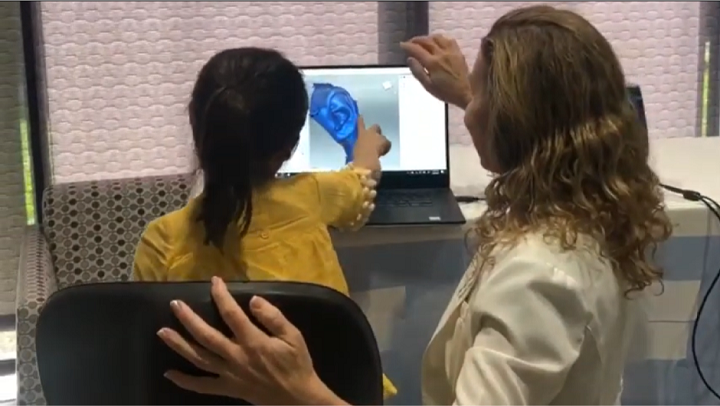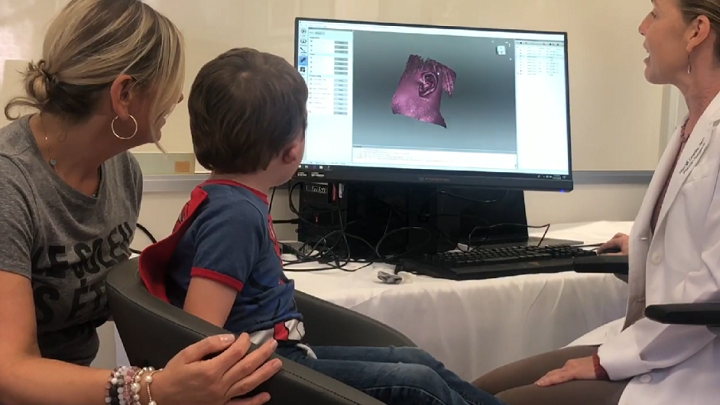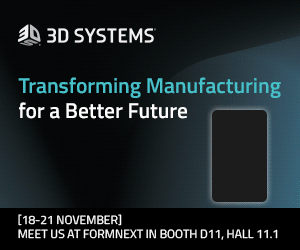About one in every 8,000 children is born with microtia, a birth defect that causes a missing, or malformed, ear. For many years, surgeons have used auricular reconstruction to fix this, which requires a piece of rib cartilage to be taken from the patient’s chest, carved into the shape of a healthy ear, slid under the cranial skin, and then stitched into place, all over the course of two to four surgeries. These new ears are often thicker than normal, don’t match the healthy ear, and the young patients also have permanent chest scarring. On top of everything, because their cartilage has not finished growing, children have to wait until they are at least eight years old to even have the surgeries, which could result in teasing or bullying.
3D printing has been used to fabricate ear implants to help with the condition, but as a new case study from Artec 3D shows, 3D scanning also has a part to play. Craniofacial-trained plastic surgeon Dr. Sheryl Lewin, based in California, wanted to find a better way to fix microtia, and determined that creating a new ear out of something other than rib cartilage would be a major improvement.
She first looked into developing a two-piece implant as a synthetic framework for the ear, and while there were advantages, like improved appearance and less painful surgeries, the likelihood of the implant fracturing later in life was high. So, she turned to one-piece implants instead, made from high-density porous polyethylene that’s medically safe and, according to Dr. Lewin herself, “made to last a lifetime.”
Word about the “Lewin Ear” implant, complete with a surgically redesigned base for improved post-op symmetry, spread quickly, but Dr. Lewin wasn’t done yet.
“Creating lifelike ears by hand is a challenging yet incredibly gratifying task that unfortunately takes a long time. At least to achieve my standards, it does. It had taken me more than a decade to reach the level of exactitude that I was happy with, but I still felt the results weren’t perfectly symmetric,” she explained. “So I kept looking for that special something, even though I wasn’t sure exactly what it would be.”
As it turned out, that special something was the handheld, full-color Artec Space Spider 3D scanner. While researching, Dr. Lewin found some articles on healthcare 3D scanning applications, which led her to a case study about a UK hospital that uses the Space Spider to help microtia patients. She arranged for a demo of the accurate, high-resolution scanner with Chris Strong of local Artec reseller Rapid Scan 3D, and fell in love.
“When Chris pushed the button and began scanning with Space Spider, I was amazed by the level of detail appearing on the screen in real time,” she said. “Everything he scanned was captured just perfectly. In just seconds, the organic shapes and features of the ear were all picked up and transformed into a 3D scan so incredibly lifelike.”
Dr. Lewin has since scanned hundreds of ears with the Space Spider, developing a unique workflow as she went along—one that doesn’t involve putting young children under anesthesia to get a good CT scan of their ears.
“You can use it even on a three year old, and in less than one minute you have a perfect image of her ear,” she explained.
Once Dr. Lewin has determined that the child is a good surgical candidate, she first tells the family how the scanner works, noting that its structured blue light is safe. Once she has an unblocked view of the ear’s structure, which is attained by slicking back the hair above the ear, the young patient sits still, playing a game on a smartphone, while Dr. Lewin captures 3D scans with the lightweight Space Spider. Then the patient, their parents, and Dr. Lewin review the scans together.
“After I introduce the scanner to the child, which they’re always curious about, I just scan their healthy ear once or twice, making sure that I get all the anatomical structures we need for making the new ear. With Space Spider it’s very easy, and I have immediate feedback on the screen in the scanning software, Artec Studio, so I know that everything’s been perfectly captured,” she explained.
“The parents that come in, they’re just amazed and blown away by what they’re seeing.”
The STL files from the scans are sent to implant specialist Poriferous LLC, which creates the custom ear implant out of its proprietary Su-Por blend of polyethylene. Specialized software is used to make any necessary adjustments, and Dr. Lewin receives the sterile implant in two weeks. She then sculpts other details for “the exact level of realism that she wants,” and during the surgery, adjusts the base of the implant so that it’s symmetrical to the other ear after placement.
“The reason I do this is because with microtia it’s not merely the external ear that’s affected, but all these other structures as well. Maybe in 15% of cases it’s just the ear itself, but with the majority of patients, there’s at least some hemifacial microsomia present,” she explained.
“That means that the skull is at least a little different on the affected side. And the jaw is usually smaller, as well as the cheek and the eye socket. All of this needs to be taken into account when the new ear and its base are being prepared.”
The surgery typically lasts 8-10 hours, and two hours later, the patient is out of the hospital. Over the next two weeks, they will return for two follow-up appointments to ensure healthy healing and no complications.
Another way Dr. Lewin uses the Artec scanner to help her patients is by scanning the healthy ear and, if it’s extremely prominent, performing what she calls a virtual otoplasty. This procedure typically involves pinning the prominent, healthy ear back so it’s flat against the patient’s head, but Dr. Lewin makes everything more symmetrical by using the scan to surgically adjust it so both ears match.
“Then when you look at the child from the front, the result is a beautiful symmetry, as if it’s always been that way,” she said.
Whether her patients come from the US, Australia, Europe, or South Korea, Dr. Lewin personally keeps in touch with them and their families.
“In terms of the impact that Space Spider has had on my practice, it is the single biggest jump in my ability to improve my results that I’ve had in my entire career,” Dr. Lewin stated.
(Source/Images: Artec 3D)
Subscribe to Our Email Newsletter
Stay up-to-date on all the latest news from the 3D printing industry and receive information and offers from third party vendors.
Print Services
Upload your 3D Models and get them printed quickly and efficiently.
You May Also Like
2.5D Mouse Muscle Tissue Made on Vomit Comet
In space, manufacturing has always been an area with much speculation but little actual progress. The idea is simple: zero or reduced gravity environments may be a better place to...
Tiny Bioprinter Could One Day Repair Vocal Cords During Surgery
A team of engineers and surgeons at McGill University in Montreal, Canada, has created the world’s smallest 3D bioprinter, and it could change how doctors repair damaged vocal cords. At...
3D Printing News Briefs, October 25, 2025: Strategic Investment, Inner Ear Organoids, & More
In this weekend’s 3D Printing News Briefs, we’ll start off with some business news, as Xact Metal announced continued double digit growth in Q2 and Q3 of 2025, and the...
When Bioprinting Enters the Room: Wyss Institute’s Chris Chen Joins the National Academy of Medicine
Christopher Chen, one of the architects behind Harvard’s 3D Organ Engineering Initiative, has been elected to the National Academy of Medicine (NAM), a rare honor that points to just how...









































